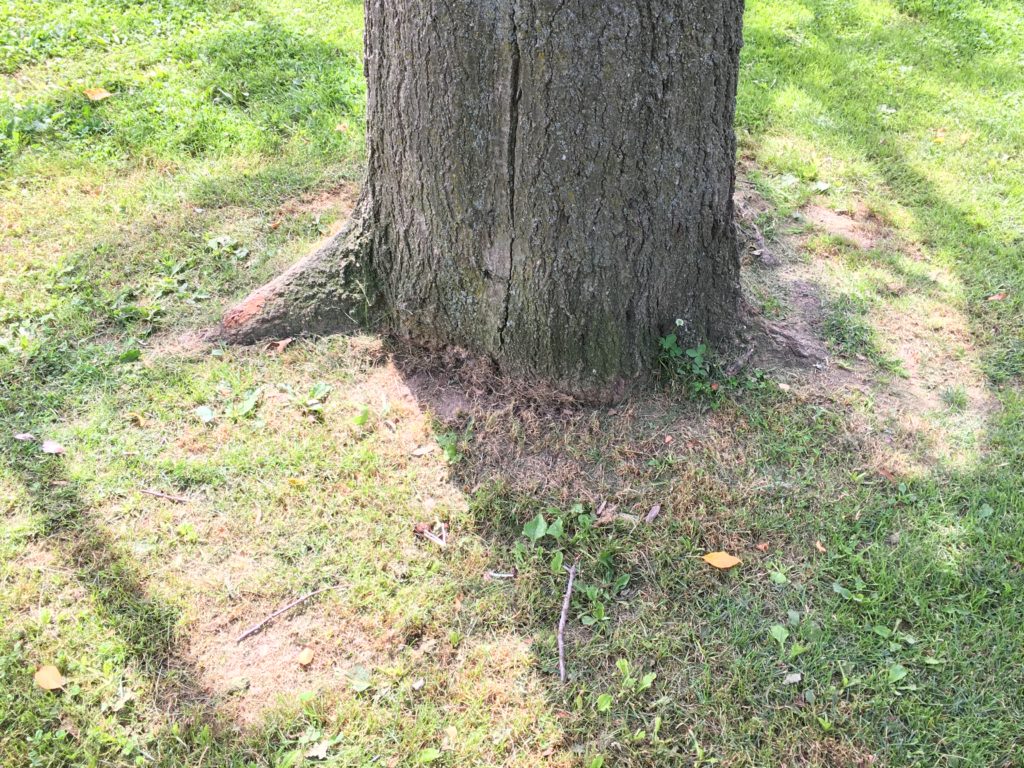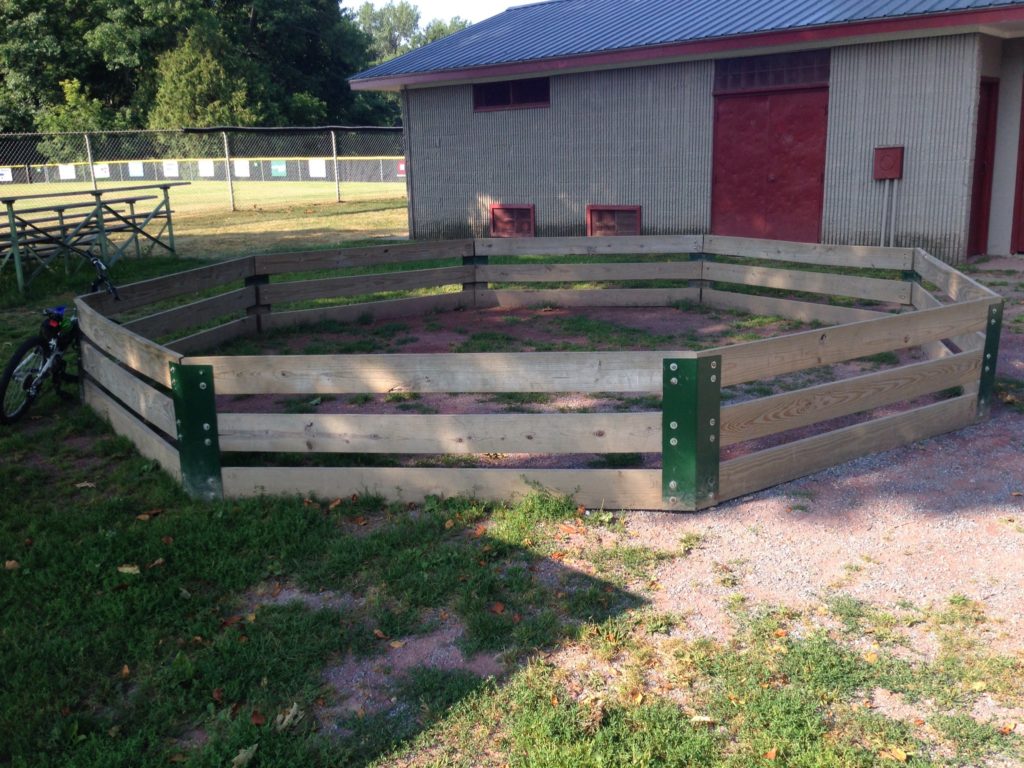The Mystery at Calahan Park

The Victim:
A significant tree at Calahan Park, a popular destination situated on a hillside between two residential neighborhoods, has been under examination over the course of the year. The red oak, roughly thirty years old, was first reported to be suffering a decline in health with little to no improvements thus far. By observing the tree, it is apparent that the tree is shutting down. Its appearance is unusual for a red oak including leafless branches, leaf scorch, and a lack of root collar flaring. These are obvious indications that the tree is undergoing a health decline. Although these symptoms are consistent with particular diagnostics, numerous characteristics can overlap and make it difficult to determine key causes.

Initial Assumption:
The Gaga Court, a publicly offered amenity at Calahan Park, was recently removed in an attempt to save the tree. It was initially believed that the court may have been the culprit, causing problems for the health of the nearby tree. The court was removed and has been relocated. After removing the court all together, Parks and Recreation Arborists liquid fertilized the soil surrounding the tree in an attempt to supply it with essential nutrients for rehabilitation and growth.

So what is Gaga Ball anyway? The game is played with one ball, combining dodging, striking and jumping with the object of being the last person standing. It is known for being a gentler form of dodgeball. Gaga Courts, the enclosed space upon which the game of Gaga is played, generally consists of flat walls atop a sandy surface or pit. Learn more.

Recent Assumption:
I had a chance to speak with City Arborist, Warren Spinner, about his views and experience in relation to the subject matter. Spinner believes that the suspect is root girdling as it is not visible when looking at the tree. Determining stressors are complex. There is not always one problem. Further investigation is required before any conclusions can be reached regarding the primary cause of the tree in decline.
Girdling as the Possible “Root” of the Cause:
The only way to determine if root girdling is causing the problem is to examine the trees root system and its relationship to the trunk. This is suspected to being an abiotic situation, with underground root compaction and a stem girdling root circling the base of the tree. This evidently chokes the tree, cutting off the flow of water and nutrients between the roots and branches, denying its ability to maintain stability. Long term effects of girdling roots include a decline in appearance and health, leading to a premature death.
Causal factors of stem root girdling can be genetic or cultural. The common theory of the cause is related to cultural practices including poor growing and planting techniques. For example, if the tree is planted too deeply, this can greatly affect the natural root pattern of the tree. By planting too deeply, less oxygen and water is available to the tree, leading to roots growing up towards the surface of the soil for support and eventually circling and suffocating the trunk.
Plans for Improvement:
Vertical mulching: If girdling seems to be primary stressor, removing the problematic roots and doing vertical mulching will follow. This process will help to alleviate the soil compaction, preserve aeration and exfoliation within the critical root zones of trees, and promote the formation of finer roots.
Root crown inspection: Warren and his team of local arborists conducted this inspection using air tools, which compresses and blow air into the dirt, exposing the deep roots surrounding the tree. This thorough investigation exposed broad based root decay coming from the tree. This could mean a number of things for the “root” of the cause.
The Final Diagnosis:
In the weeks to follow, further actions have been taken to solve the mystery behind the declining oak. Warren and his team have officially declared root rot fungus as the ‘root’ of the problem. This fungus is terminal for the tree.
What’s next?
The final decision whether the tree can be saved or if it will have to be removed will be determined after the tree attempts to leaf out next spring in 2017. If the decision is made to remove the tree, the stump will be ground out and a new tree will be planted in its place.
What type of tree will be planted next? Stay tuned as the excitement grows.
